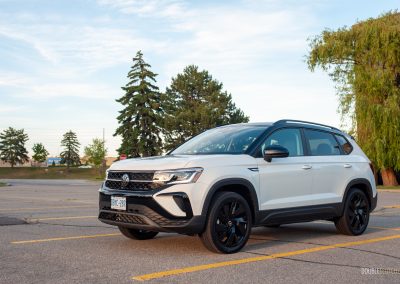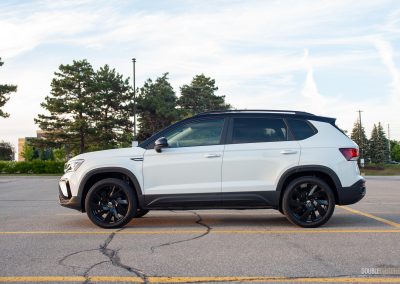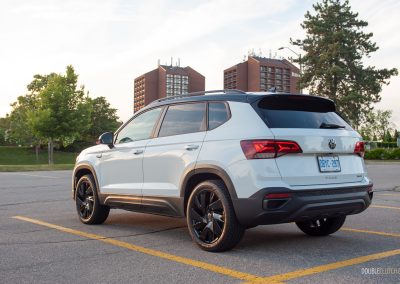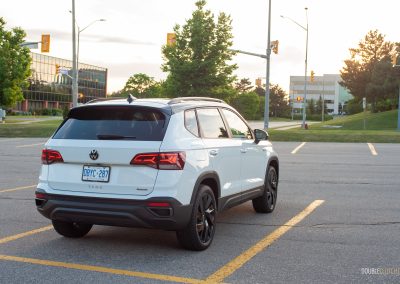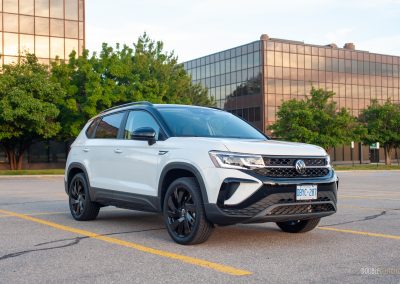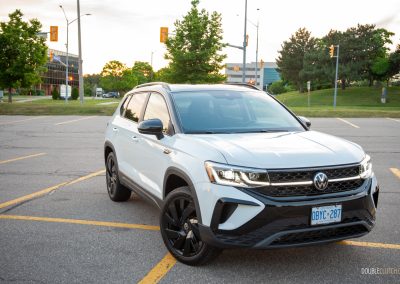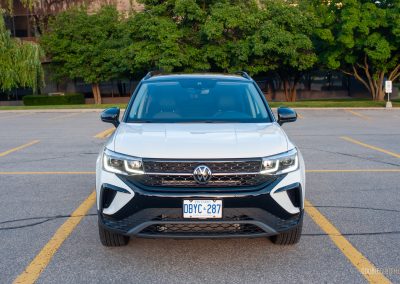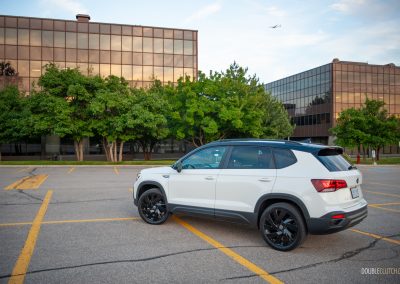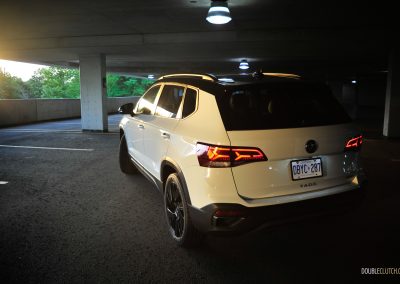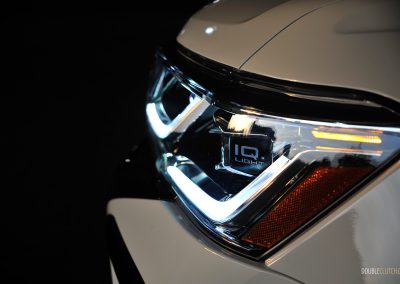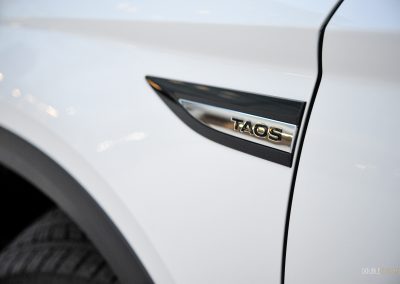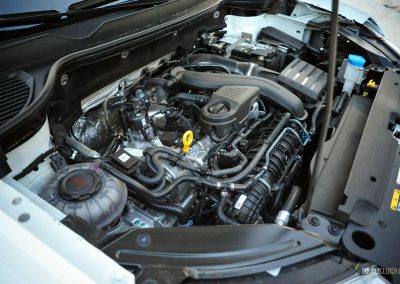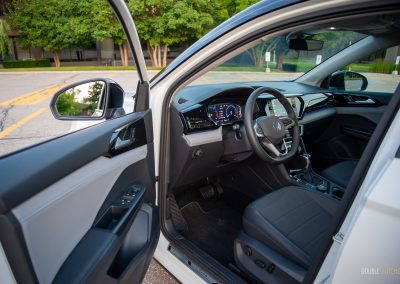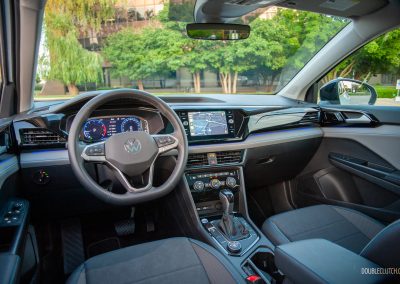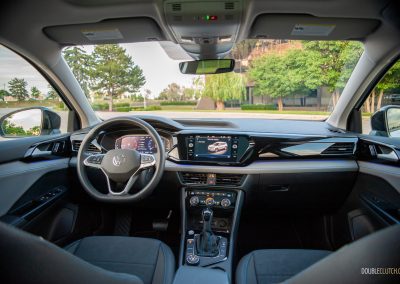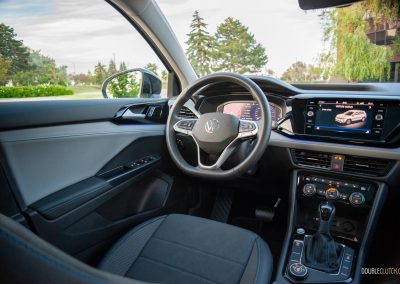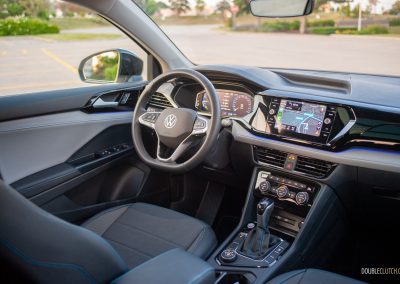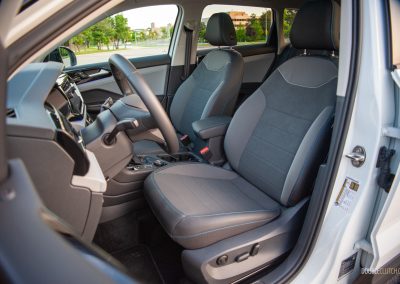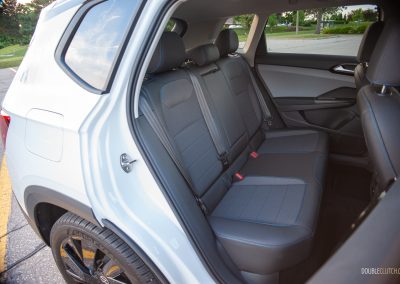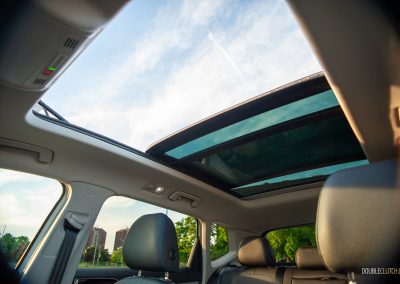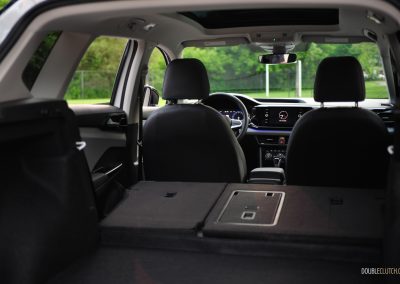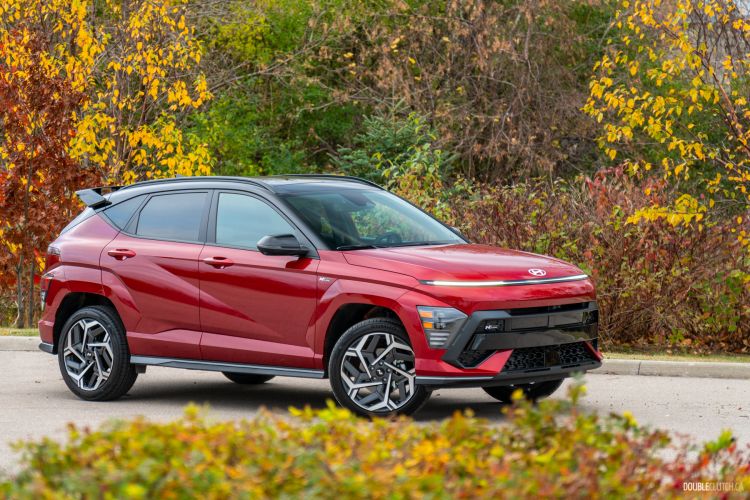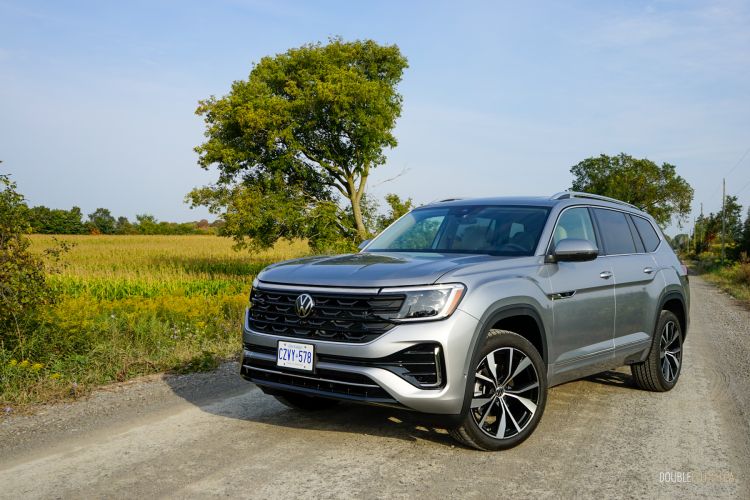A constant theme drilled into us from a young age is to always make a good first impression. Be it the first date or a big job interview, a good first impression is a lasting impression, and it can be the deciding factor to whether you get that second date or land that lucrative career. For many up-and-coming professionals, appearances do matter, and they want to make an impression that they have finally made it. The 2024 Volkswagen Taos Comfortline Black Edition does a great job at this, projecting an image of style and independence in a nicely wrapped utilitarian package.
The Taos is not a unique-looking vehicle, taking styling cues from other vehicles in the Volkswagen portfolio. Its front end is inspired by the bigger Volkswagen Atlas, and the taillights mimic an Audi Q5. Is this a bad thing? Absolutely not. The Taos’ overall conservative styling is well-executed and will age better than some of its competition. Our tester’s Pure White exterior paint with contrasting Deep Black Pearl accents makes for a more distinctive look compared to the rest of the Taos range. Within the VW Canada portfolio, it slots between the Jetta and Tiguan as an entry-level compact crossover, aimed at contenders such as the Kia Seltos, Toyota Corolla Cross, and Mazda CX-30 to name a few.
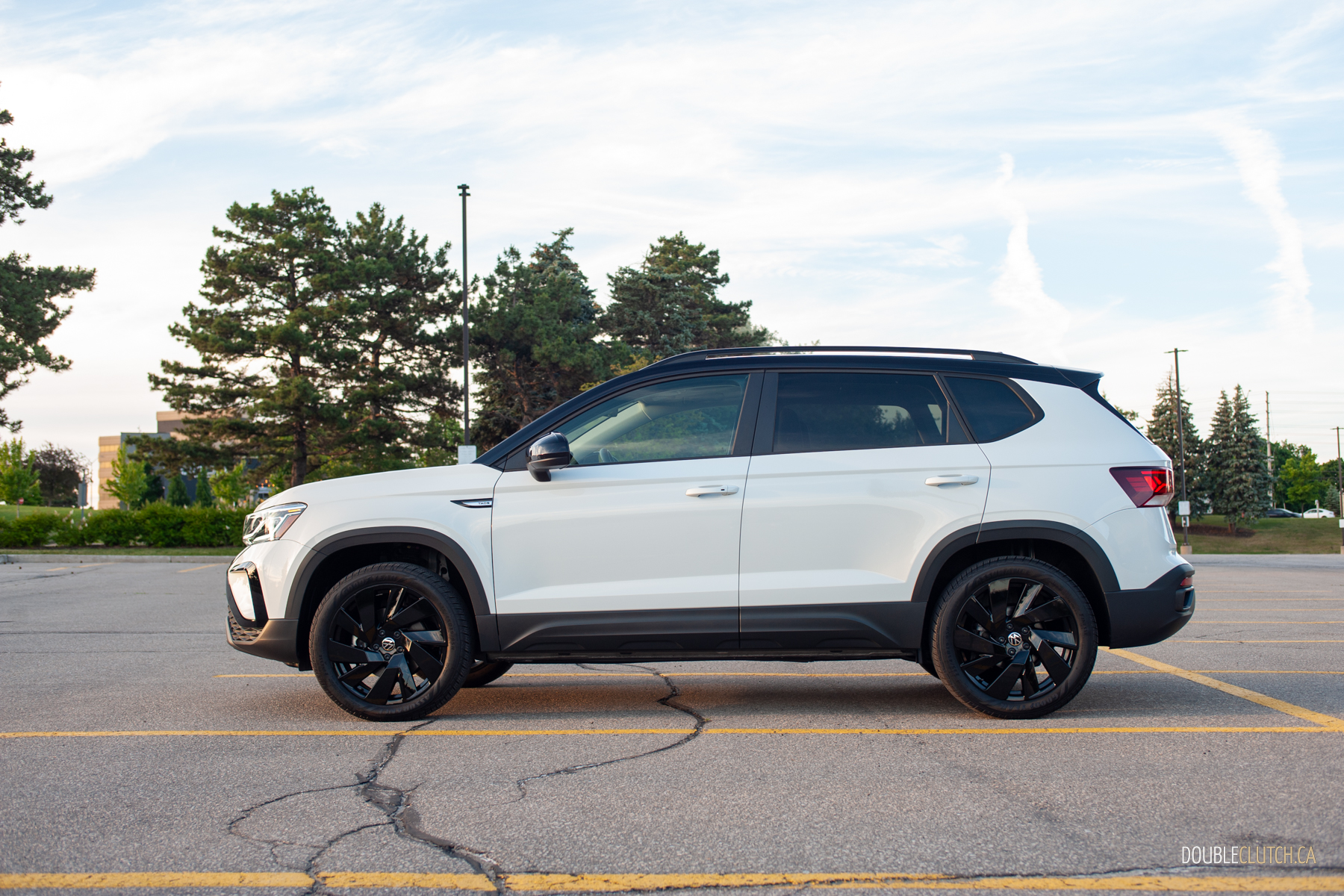
Volkswagen divides the Taos into three main trims: the Trendline, Comfortline, and Highline. For 2024, Volkswagen is adding some extra swag in the form of the Black Edition, an appearance package available on the Comfortline trim. The bulk of the changes are cosmetic, including mirror caps, interior trim, and upsized 19-inch wheels in gloss black, plus a blacked-out grille and an optional contrasting roof. It also receives a few features from the Highline trim, such as a panoramic moonroof, adaptive LED headlights, and a 10.25-inch digital instrument cluster. Furthermore, the Taos Black Edition comes with with Volkswagen’s suite of safety and driving assists, including blind-spot monitoring, adaptive cruise control, lane-keep assist, and automatic emergency braking.
The Taos is powered by a 1.5-litre turbocharged four-cylinder engine, making 158 horsepower at 5,500 rpm and 184 pound-feet of torque at 1,750 rpm. All-wheel-drive and a seven-speed dual-clutch automatic transmission is standard on the Comfortline Black Edtion and Highline, while lesser front-wheel-drive trims use a more traditional eight-speed automatic. Despite the average numbers for the subcompact crossover segment, the Taos has ample passing power at quarter to half-throttle, and doesn’t feel lethargic, unlike the Corolla Cross or Honda HR-V.

While the Taos does provide adequate power, the transmission’s hesitation and jerkiness while driving at normal speeds makes for a less desirable driving experience. Our tester had a tendency to delay downshifts while trying to overtake, which isn’t a problem in Taos models with the eight-speed automatic. With the transmission in Sport mode, downshifts above 2,500 rpm felt jerky since it provided little to no rev-matching, which is a little disappointing considering other VWs with the same transmission feel a lot smoother. What we did find during our time with this Taos is if you select Sport in the Drive Mode but keep the transmission in Normal by pulling the shifter down, the hesitation and jerkiness is less frequent. For something that will be primarily used to putter around town, the Taos with the dual-clutch transmission oddly prefers being driven with a lead foot.
The rest of the Taos is typical VW. Steering feel is somewhat numb, but provides accurate and quick response that will satisfy most buyers in this segment. In terms of body control, our tester felt planted in tighter turns and long sweepers thanks to the multi-link independent rear suspension setup, which is only found on AWD-equipped models. With Toronto’s never-ending construction and potholes, the Taos also does a great job of absorbing terrible bumps and minimizing noise, vibration, and harshness, even on 19-inch wheels.
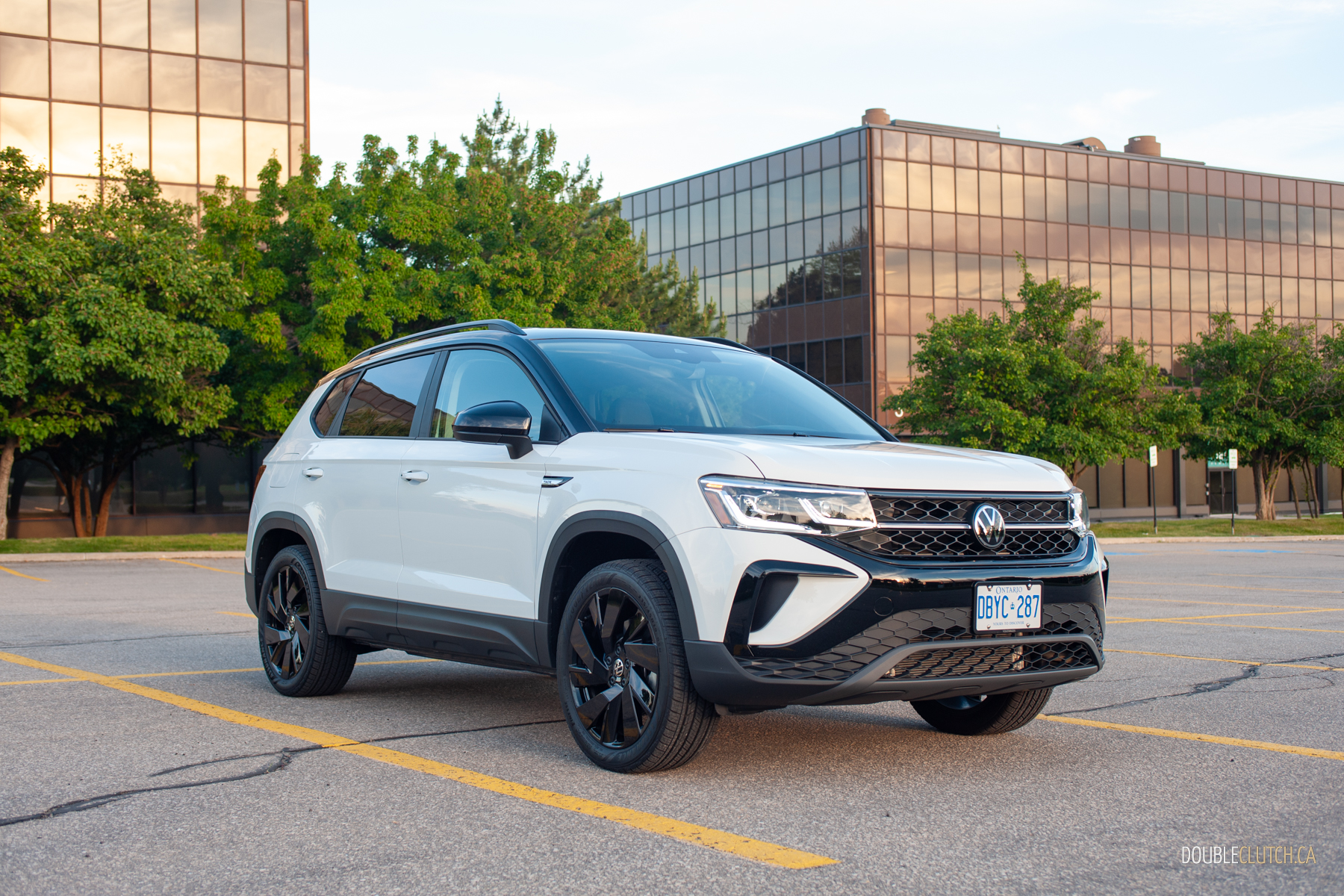
Observed fuel economy during our stint with this Taos was around 9.5 L/100 kilometres combined, which is less efficient than the advertised 8.5 L/100 km combined rating. Most of the drive was stop-and-go traffic with air-conditioning turned on, along with some highway sprints in Sport Mode. With a 50 L fuel tank, expect about 550 to 600 kilometres on a full tank of 87-octane gas, as long as you don’t drive like a buffoon.
Inside, the Taos is a familiar sight for those who have been around other VWs — not groundbreaking, but welcoming. The main touchpoints retain physical controls such as buttons and knobs for your climate controls, buttons on the steering wheel, and a traditional gear lever. This is a breath of fresh air for those who loathe less intuitive haptic feedback controls, rotary dials, and giant screens found in other vehicles, including other Volkswagens.
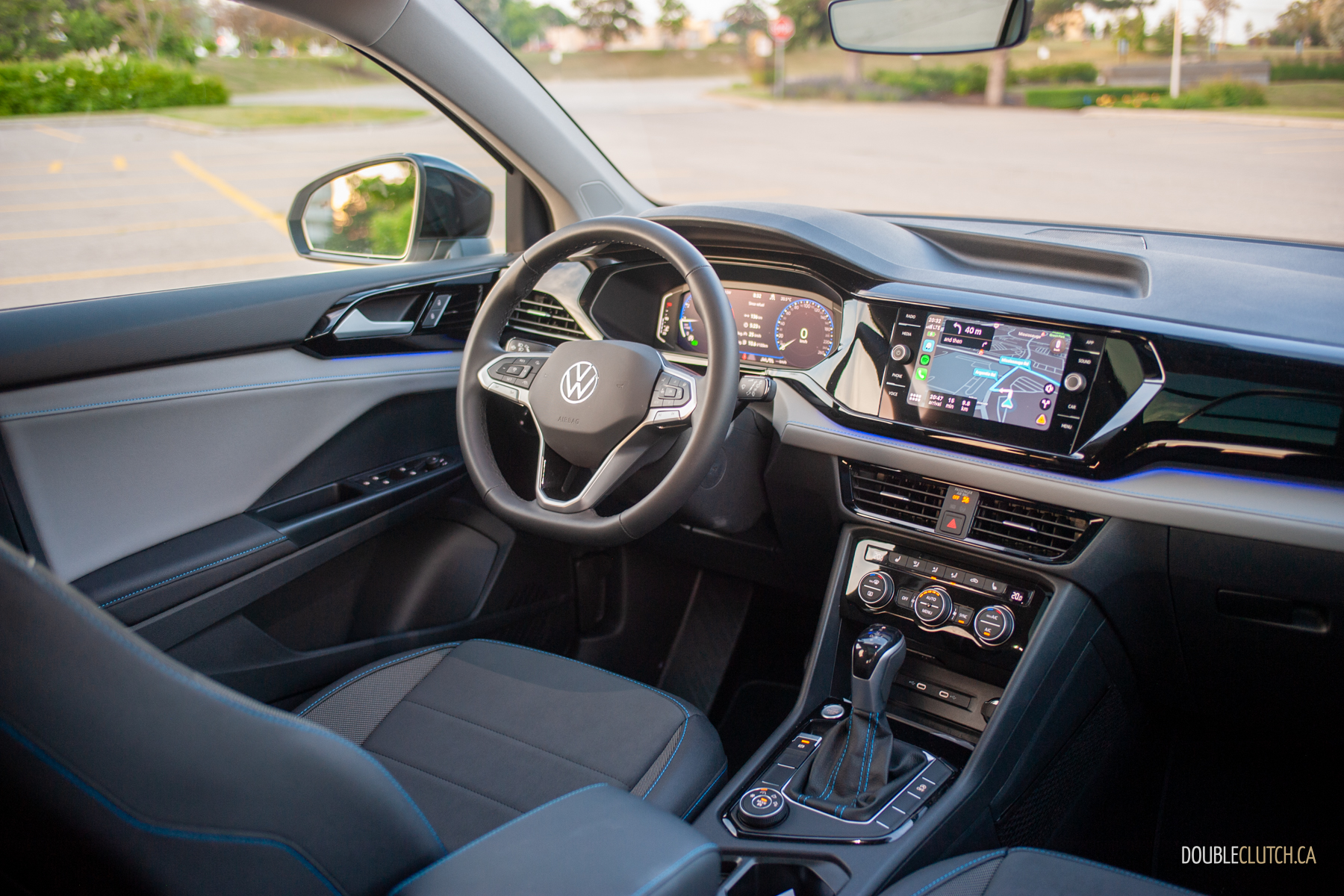
For buyers expecting modernity, the Taos offers a crisp and customizable 10.25-inch digital gauge cluster and an eight-inch touchscreen for your infotainment. Apple CarPlay and Android Auto come equipped as well, and integration is very good for the most part, save for occasional connectivity glitches if your phone isn’t directly on the wireless charging pad. When in use, the back-up camera takes up the entire eight-inch display, but the picture resolution is a little grainy. Cargo space is average for the subcompact SUV segment; a little snug to fit a stroller with a few grocery bags in the back, but adequate for transporting full-size adults in the rear with ample space.
The main interior drawback, particularly with the Taos Black Edition, is the gloss black piano interior trim that spans across the entire dashboard. It reflects a lot of sunlight at certain angles, and is a dust-and-fingerprint magnet. Utilizing a textured matte finish would have been more ideal. Although the interior is a nice blend of materials, a black cloth headliner would have been the cherry on top, mimicking the R-Line trim on the Tiguan and Atlas.
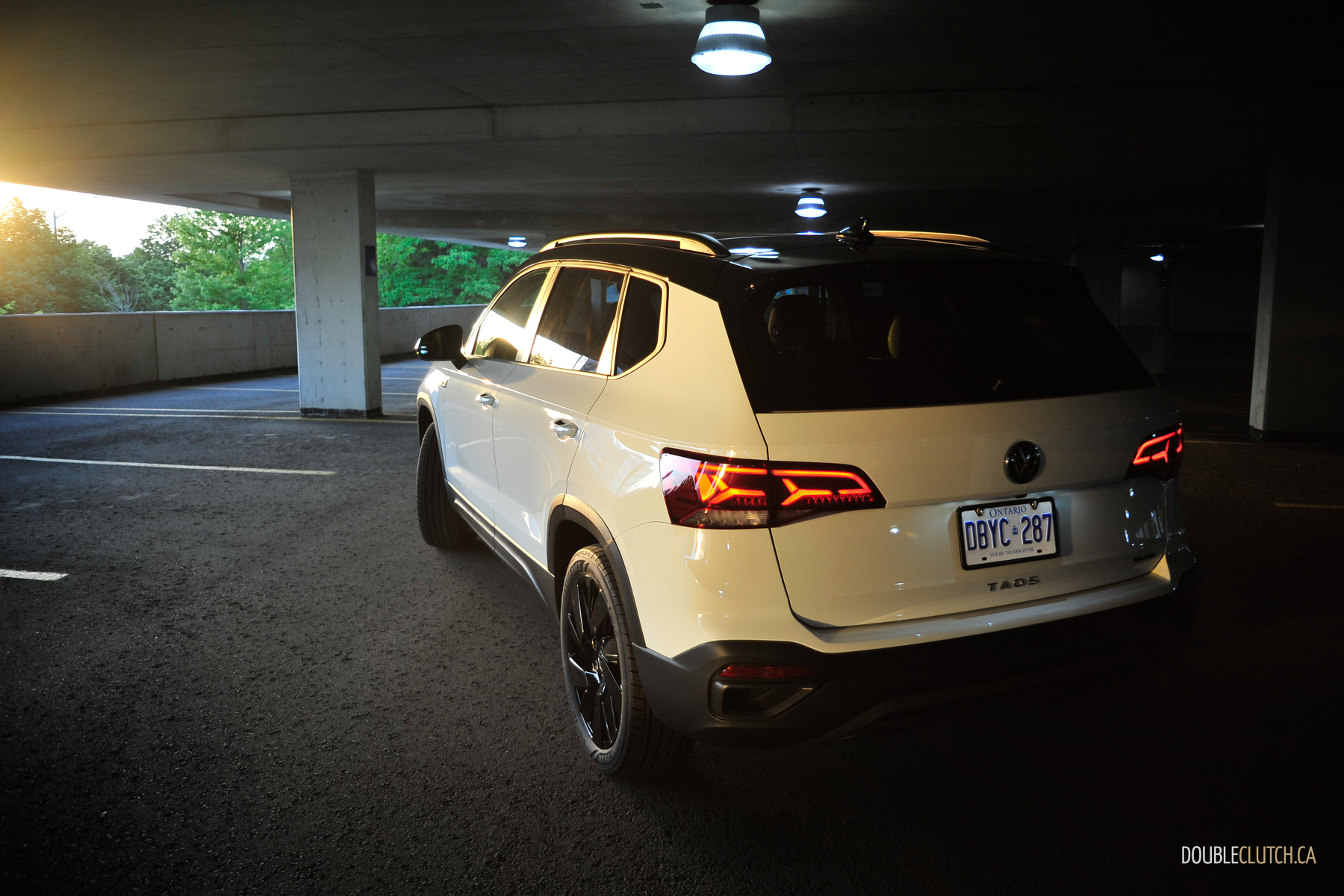
Gloss black trim and headlining aside, the Taos Black Edition is familiar and welcoming, especially if you’re coming from an older vehicle. If you’re willing to put up with the transmission’s occasional jerkiness, the Taos rewards you with a stable and compliant drive thanks to the AWD system and independent rear suspension setup. Plus, the learning curve to get comfortable is minimal thanks to the legacy controls people are used to, and it has enough modern accoutrements to make a good first impression on anyone else riding with you.
And at $35,395 as-tested, although the 2024 Volkswagen Taos Comfortline Black Edition is more expensive than most of its competitors, it’s a sizable savings over the Highline trim. If you’re in the market for a Taos, this makes it a no-brainer, letting you enjoy a lot of the Highline trim’s high-end features without breaking the bank.

